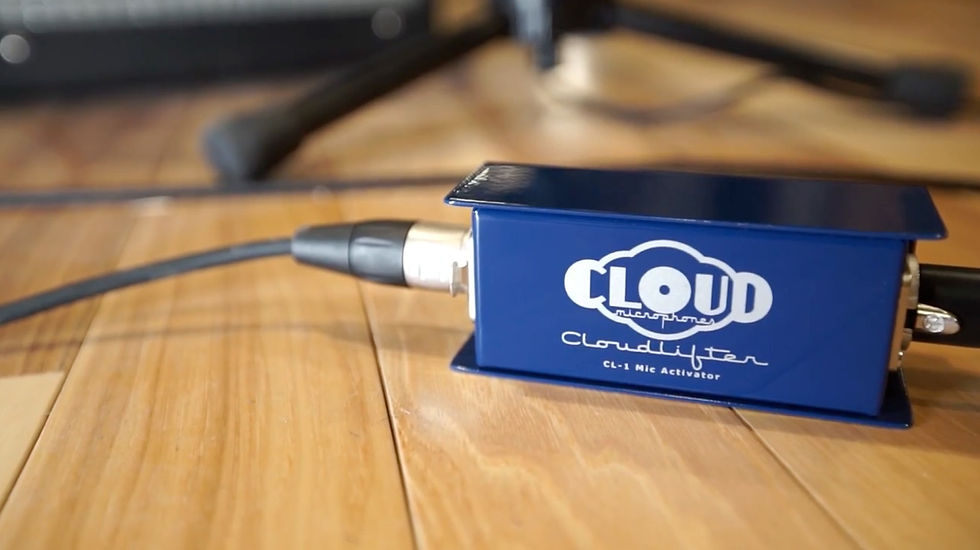How to Choose the Right Podcast Equipment on a Budget
- F2B
- Nov 1
- 4 min read
When we first started, we believed that to have a professional sound, we would need to spend a fortune on gear. But we quickly learned that it's not about the size of your budget; it's about the quality of your choices. You can create a show that sounds amazing without breaking the bank. It's all about looking beyond just the microphone to see the bigger picture.
The right mic depends on your budget and experience, and we'll start with the most affordable option and work our way up. You don't need to spend a lot to get good quality, but the truth is, a beautiful mic can sound like "hot garbage" if not used correctly. The key is to find the right tool for your specific needs.
Choosing the right mic for your podcast on a budget

Samson Q2U: The Best Bang for Your Buck
For beginners, the Samson Q2U is an excellent starting point and a great alternative to the discontinued Audio-Technica ATR2100x. It's a dynamic microphone with a cardioid pickup pattern that focuses on your voice and rejects ambient noise, making it forgiving of less-than-ideal recording conditions. What makes this mic a game-changer for beginners is its dual connectivity: it has both a USB and an XLR output. This means you can start with a simple, plug-and-play USB setup directly into your computer and, as you become more confident, upgrade your setup with a mixer or audio interface using the XLR connection. It’s a durable, travel-friendly mic that won’t break the bank, typically costing around $70.
Price: around $70
Connectivity: USB and XLR
Type: Dynamic
Polar pattern: Cardioid

Samson Q2U
Audio-Technica ATR2500X-USB: The Best Mid-Range Mic
The Audio-Technica ATR2500X-USB is a great middle-ground mic that's perfect for voiceovers, streaming, and podcasting. It's a side-address condenser microphone that plugs directly into your computer via USB-C or USB-A. Because of its USB connectivity, you don't need to have an audio interface to use it, which is ideal for beginners looking for a simple setup. Its cardioid polar pattern helps to isolate your voice and reduce unwanted sound from the sides and rear, which is great for a quiet, untreated recording space. The ATR2500X-USB delivers studio-quality microphone technology in a budget-friendly design.
Price: Varies (but more expensive than the Samson Q2U)
Connectivity: USB
Type: Condenser
Polar pattern: Unidirectional

Audio-Technica ATR2500X-USB Cardioid Condenser USB Microphone
RØDE PodMic: The Best Value for XLR
As filmmakers, we have used RØDE audio gear for years and trust the brand. While I haven't used this microphone personally, it has become highly recommended by many in the industry. The RØDE PodMic is an XLR-only microphone, meaning you'll need an audio interface to use it. At around $99, it's a very affordable option that offers unbeatable value in the XLR world. It's a dynamic mic specifically made for podcasting, delivering a rich, warm sound. Built like a tank with an all-metal construction, it has an integrated pop filter and shock mount, and looks sleek and professional on camera.
The RØDE PodMic's price point makes it an excellent choice for those who are willing to step up their game and invest in an audio interface for better sound quality.
Price: around $99
Connectivity: XLR
Type: Dynamic
Polar pattern: Cardioid

Shure SM7B & SM7dB: The Top Tier
Now we're in the top 20% of the market. This is where the Pareto Principle, or the 80/20 rule, comes into play: you can get 80% of the result for 20% of the price, but if you want that last little bit of quality, you’re going to have to pay for it. That last little bit is a nice quality bump, but it comes at a cost, so your budget and specific use case should dictate your choice.
You've seen this microphone everywhere: the Shure SM7B is the go-to for many of the world's top podcasters, streamers, and musicians, and for good reason. Its unique design and cardioid polar pattern help it reject unwanted background noise, making almost any voice sound incredible.
The catch with the SM7B is that it is an analog mic and requires an audio interface that can deliver at least 60 dB of clean, noise-free amplification to work properly. Without it, your voice will sound too quiet. You can add a phantom-powered preamp, such as a Cloudlifter, to boost the output of the microphone.

If you don't want to deal with a separate audio interface and preamp, you can opt for the SM7dB. The SM7dB is a newer version of the SM7B and is a shrewd choice for many content creators. It has a built-in preamp that can provide up to +28 dB of clean gain. This makes it compatible with a wider range of audio interfaces and solves the "gain staging frustrations" that many SM7B users experience. The SM7dB still connects via XLR, and its preamp requires phantom power to function.

Shure SM7B: Price: $439 | Connectivity: XLR | Requires an audio interface with high gain.

Shure SM7dB: Price: $549 | Connectivity: XLR | Has built-in preamp, simplifying the setup.
We’ve covered everything from a budget-friendly starter microphone to the industry-standard
models, showing that a professional sound isn’t about how much you spend but about making smart choices for your specific needs. The key is to find the right microphone for your budget and the right balance between simplicity and advanced quality.
As we've seen, some microphones, like the Audio-Technica ATR2500X-USB, are great for beginners because they connect directly via USB and don't require any extra gear. As you begin to climb the quality ladder with microphones like the RØDE PodMic or the Shure SM7B, you'll need an audio interface to power them. This is a whole other beast—one we’ll conquer next.
Got questions about your specific setup or want to share what gear you use? Drop a comment below!

Comments